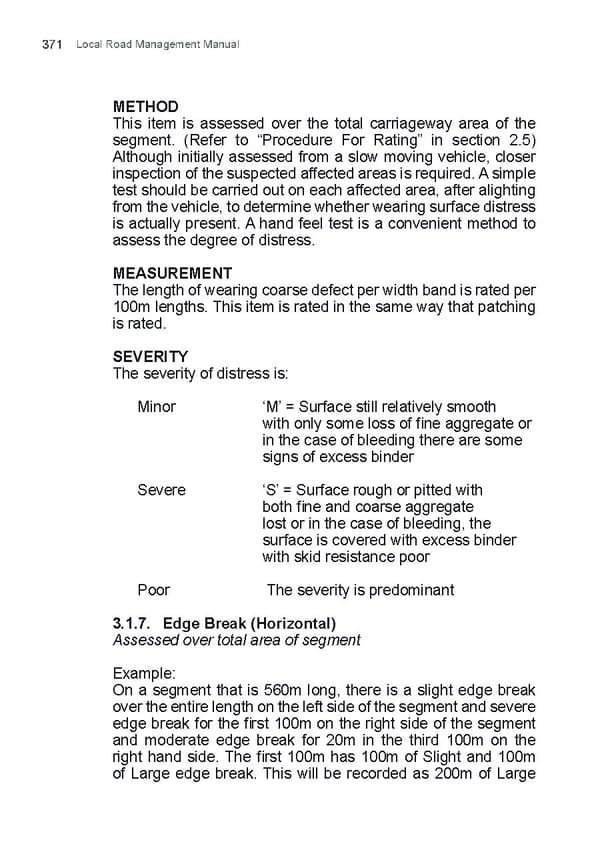Local Road Management Manual 371 METHOD This item is assessed over the total carriageway area of the segment. (Refer to “Procedure For Rating” in section 2.5) Although initially assessed from a slow moving vehicle, closer inspection of the suspected affected areas is required. A simple test should be carried out on each affected area, after alighting from the vehicle, to determine whether wearing surface distress is actually present. A hand feel test is a convenient method to assess the degree of distress. MEASUREMENT The length of wearing coarse defect per width band is rated per 100m lengths. This item is rated in the same way that patching is rated. SEVERITY The severity of distress is: Minor ‘M’ = Surface still relatively smooth with only some loss of ifne aggregate or in the case of bleeding there are some signs of excess binder Severe ‘S’ = Surface rough or pitted with both ifne and coarse aggregate lost or in the case of bleeding, the surface is covered with excess binder with skid resistance poor Poor The severity is predominant 3.1.7. Edge Break (Horizontal) Assessed over total area of segment Example: On a segment that is 560m long, there is a slight edge break over the entire length on the left side of the segment and severe edge break for the ifrst 100m on the right side of the segment and moderate edge break for 20m in the third 100m on the right hand side. The ifrst 100m has 100m of Slight and 100m of Large edge break. This will be recorded as 200m of Large
 LRM Manual CMGP Page 370 Page 372
LRM Manual CMGP Page 370 Page 372